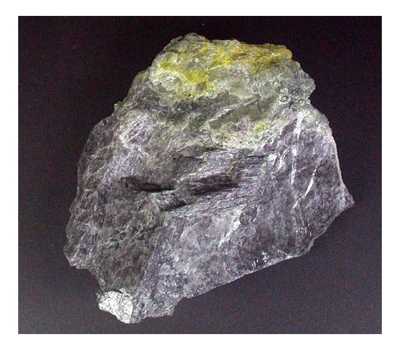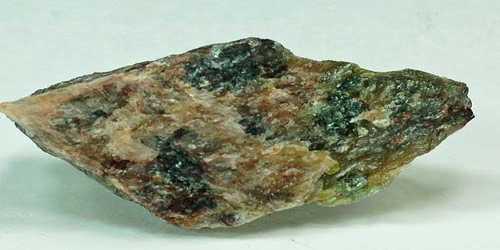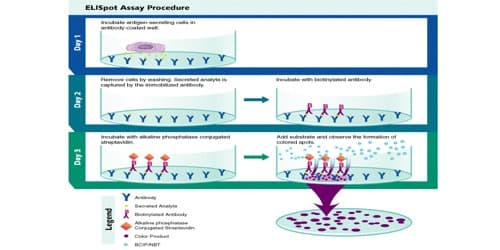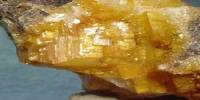Althausite is a relatively simple magnesium phosphate mineral with formula Mg2(PO4) (OH, F). It is very rare. The mineral is light grey with vitreous lustre, running brown on alteration to apatite. Original occurrences are magnesite deposits among serpentinites. It is named after Egon Althaus (born 1933), a mineralogist at the University of Karlsruhe, Germany.
General Information:
- Category: Phosphate minerals
- Formula: Mg2 (PO4) (OH, F)
- Crystal system: Orthorhombic
- Crystal class: Dipyramidal (mmm); H-M symbol: (2/m 2/m 2/m)

Physical Properties of Althausite
- Lustre: Sub-Vitreous, Resinous
- Transparency: Translucent
- Colour: Pale gray, reddish brown; dark blue, green, black
- Comment: turning brown on alteration to apatite
- Hardness: 3½ – 4 on Mohs scale
- Tenacity: Brittle
- Cleavage: Perfect; {010} perfect; distinct along {110}
- Density: 2.97 g/cm3 (Measured) and 2.91 g/cm3 (Calculated)
Occurrence
Althausite occurs as cleavable masses in serpentine-magnesite deposits at Modum, Norway. Later the mineral has also been found as a secondary product in granitic pegmatites, in Brazil. In pegmatites, the color of the mineral may vary from dark blue-green to black (Frost et al. 2014). It has also been found in the Panasqueira Sn–W deposit.
Althausite may alter to apatite along the cleavage planes. This especially typical for the althausite found at the Overntjern locality, Norway.
Information Source;
















